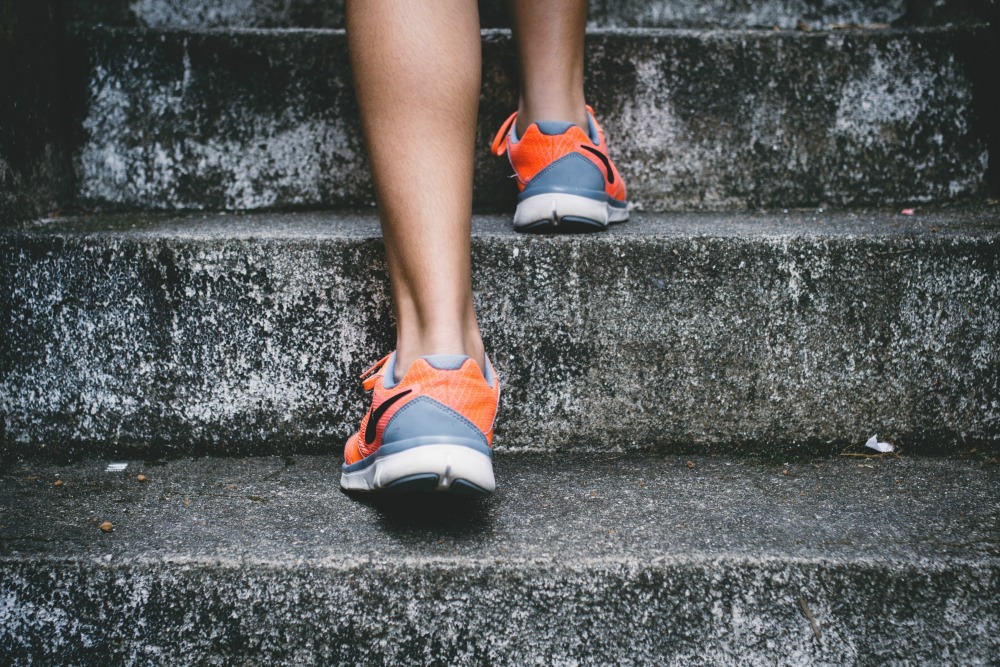By Leslie Vandever
You have arthritis. It hurts to move. In fact, sometimes it hurts so much that the very idea of exercise, even though you know it’s healthy sounds counterintuitive and even downright crazy. Everyone knows that pain is the body’s way of letting us know that something’s wrong, so it only makes sense to stop doing whatever it is we’re doing that hurts.
Well, yes. That’s perfect advice if you’ve fallen off a ladder and broken your arm, or sprained an ankle while running. It’s only smart if the pain happens because you touched a hot iron, or sliced a finger with a bread knife.
But it’s not always good advice if you have arthritis. Here’s why:
There are more than 100 different types of arthritis, but the two types we hear about most often are osteoarthritis and rheumatoid arthritis. The first, osteoarthritis, is the most common form of arthritis, affecting some 27 million American adults. Well-known as the “wear-and-tear” arthritis, it tends to affect people in middle age and older, usually in the hip joints, the knees, and the fingers, though it can show up in younger adults and in any joint. Osteoarthritis causes the cartilage that cushions the joints to break down over time. Eventually, bone starts rubbing on bone. This causes pain and may go on to cause disability.
Rheumatoid arthritis, which affects about 1.5 million Americans of all ages (even toddlers!), is a different beast. A systemic autoimmune disease, RA causes the body’s immune system to mistakenly inflame, attack and destroy healthy tissue, the same as it attacks foreign invaders like bacteria and viruses. RA focuses most of its painful, destructive and disabling wrath on the synovial joints–hands and wrists, shoulders and elbows, hips, knees, ankles, and feet. But it can also attack soft tissues like cartilage, ligaments, and tendons, and even organs like the heart, the lungs, the kidneys, and the eyes.
So why is exercise beneficial when you have arthritis? Here’s why:
You’ll strengthen your muscles
For people with arthritis of any type, resistance and low-to-no-impact, weight-bearing exercises/workouts are best. They include gentle stretching, working with resistance bands or weights, brisk walking, swimming, and pool exercises (the latter two remove all impact and add resistance). All of these strengthen the muscles that surround the joints and give them extra support. This is vital to prevent overall weakness and falls.
You’ll strengthen your bones
Arthritis actively wears down or destroys bone, so finding ways to keep building it up is smart. RA (and normal aging, particularly in small-boned women) can also cause osteopenia and osteoporosis, a condition in which the bones become thin and brittle, making them break easily. Resistance and weight-bearing exercises, including walking, stimulate the body to build and strengthen bones.
You’ll stay supple and flexible
Arthritis can steal your ability to use your body efficiently and well. Unused muscles grow weak, and limited, infrequent motion causes creaky, stiff joints, like the Tin Man after a downpour. Stretching, range-of-motion, and resistance-type exercises will help you maintain your muscle and joint flexibility, and as much range-of-motion as possible. You’ll feel better in your skin, look healthier, and enjoy life more.
You’ll increase your overall fitness and health
Gentle exercise like the types discussed above, when practiced for just 30 minutes a day, five days a week, will improve your overall health. You’ll fight off illness better and sleep better. Exercise can also help you lose weight or maintain your optimum weight when performed along with a sensible, balanced, low-calorie, and healthy diet. It can also improve your mental health.
~
Obviously, when a joint is moderately to severely painful and swollen it’s not a good idea to force it to move, and you shouldn’t. But when your joint pain and swelling is mild, go ahead and work the joint gently through range-of-motion exercises and stretches. And although one or more joints may be flaring, there’s no reason you can’t exercise the joints that aren’t. For instance, if your hands are flaring, take a walk. You get the jist.
Naturally, you should check with your doctor before starting any exercise program. But exercise is not only possible with arthritis, it’s vital. Motion is lotion.
Leslie Vandever is a professional journalist and freelance writer from Northern California with more than 30 years of experience in her field. She’s also had rheumatoid arthritis for 28 of those years. Read more of her work at RheumaBlog, www.rheumablog.me .
References:
- Arthritis Related Statistics. (2014, March 17) Centers for Disease Control and Prevention. Retrieved on June 20, 2015 from http://www.cdc.gov/arthritis/data_statistics/arthritis_related_stats.htm
- Callahan, L.F., et al. The People with Arthritis Can Exercise (PACE) Program: A Qualitative Evaluation of Participant Satisfaction. (2005, June 15). National Institutes of Health; Journal of Preventing Chronic Disease. Retrieved on June 20, 2015 from http://www.ncbi.nlm.nih.gov/pmc/articles/PMC1364520/
- Hurley, M. Muscle, Exercise, and Arthritis. (2002, Aug.) National Institutes of Health; Annals of the Rheumatic Diseases. Retrieved on June 20, 2015 from http://www.ncbi.nlm.nih.gov/pmc/articles/PMC1754205/
- Exercise and Arthritis. (n.d.) American College of Rheumatology. Retrieved on June 20, 2015 from https://www.rheumatology.org/Practice/Clinical/Patients/Diseases_And_Conditions/Exercise_and_Arthritis/
- Exercise for Arthritis. (n.d.) American Arthritis Foundation. Retrieved on June 20, 2015 from http://www.arthritis.org/living-with-arthritis/exercise/
